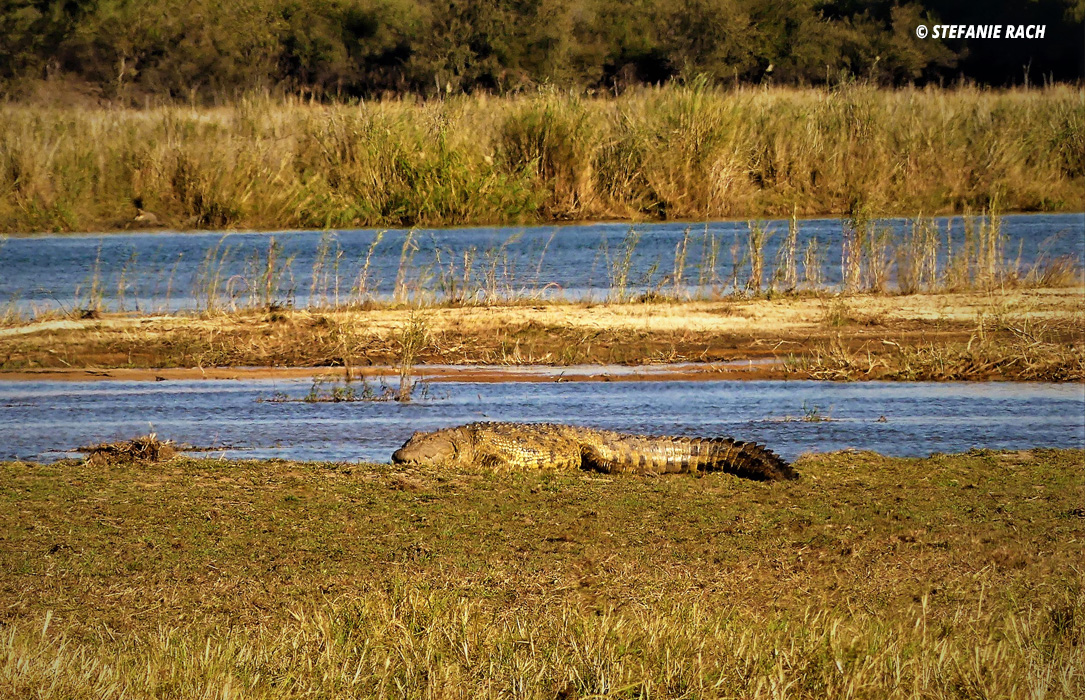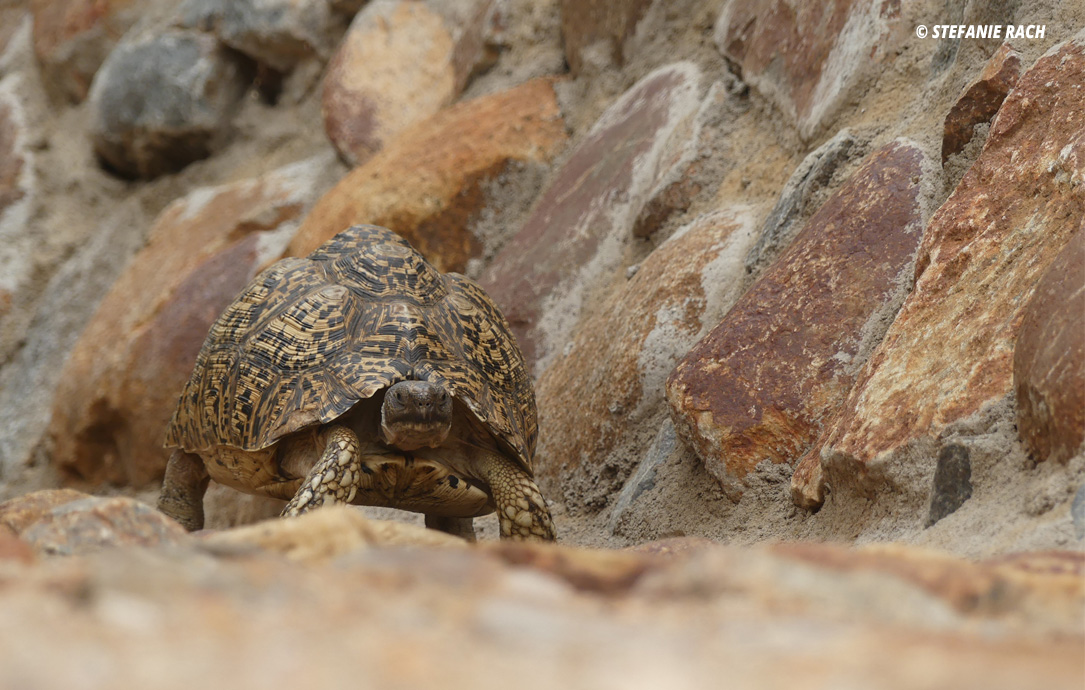And What Sex Will Your Baby Be?
In mammals and birds, the sex of the offspring is determined genetically: If the male mammal passes on its X chromosome, the offspring will be female; if it passes on its Y chromosome, the offspring will be male. In birds, the female passes on either her W chromosome (female offspring) or her Z chromosome (male offspring). However, in many reptile species, it is not genes that play a role in sex determination, but actually the weather – and thus meanwhile also climate change.

By Stefanie Rach
The leopard tortoise moves slowly through the tall, dense grass. Its shell sways gently from side to side with each step. The female tortoise looks for a sheltered spot under one of the bushes. There she digs a hole in the sand, about 20 cm deep, where she lays her eggs.
The crocodile crawls purposefully out of the muddy water of the river. The water drips from the scaly body of the female crocodile. She looks for a sheltered spot near the riverbank, preferably not far from the cooling shade of a large tree, where she can rest. There she digs a hole in the sand, about 50 cm deep, where she lays her eggs.
After laying the eggs, the female tortoise covers up the hole. Her eggs now lie in the warm, moist soil. Finally, the leopard tortoise uses the ventral side of her shell to press on the sand. This way, the nest is less conspicuous in the environment and is (hopefully) protected from predators. After all, the tortoise does not stay with her offspring. She leaves the nest area to mate again with her partner and later to lay another clutch of eggs.

The female crocodile has now also laid her eggs in the excavated hole. The rainy season will not start for a few months, so her nest near the riverbank is protected from flooding. But there are many other threats: Monitor lizards in particular are only too happy to raid nests. That is why the mother crocodile guards her nesting side. Only very rarely does she venture into the river to enjoy the cool water. Most of the time she sits in the shade of the tree and watches over her soon-to-hatch offspring.
In the nesting side of the leopard tortoise, the little tortoises are growing in their eggs. It has been very hot in the last few months – unusually hot for this time of year. So many guides have driven past the nest with their guests without noticing it. They told the safari tourists about how it has become increasingly warmer and drier in recent years and how climate change is affecting the local nature. In the tortoise’s nest, the temperature is around 33°C.

The sunlight shines on the nest of the female crocodile and warms it. As a result, there is an almost constant temperature of about 33°C here too. Meanwhile, 3 months have passed when a high-pitched chirping sound comes from the nest. This sound is made by the young ones before they hatch and it is the sign for the mother to dig up the nest in order to free her offspring from the cavity. Carefully, the mother crocodile takes the eggs into her mouth and rolls them there to help the little ones hatch. Then she carries her offspring to the water. Most of the young are males.
11 months have now passed at the leopard tortoise’s nest. A slight tremor goes through the loose sand above the nest and already the first hatchling sticks its head out. More tiny tortoises follow their sibling. They now have to find their way in life without the help of their parents. They follow their instinct. All hatchlings are female.
In tortoises, crocodiles and some other reptile species, there is a temperature-dependent sex determination: In the case of tortoises, males develop at cooler temperatures of about 26-31°C, and females at warmer 31-34°C. In the case of crocodiles, however, the situation is different. Females develop both below about 32°C and above 34°C. At temperatures in between, males hatch.
The reason for this is the enzyme aromatase, which converts the male sex hormone testosterone into the female sex hormone oestrogen. The activity of aromatase is temperature-dependent. And this is precisely the problem with climate change and the ever warmer temperatures. Scientists have already found that on some beaches, 99% of the sea turtles’ offspring were females. With this trend, female turtles will soon no longer be able to find a male partner to reproduce with – just as male crocodiles may soon run out of females.
Every problem has a solution, every solution needs support.
The problems we face are urgent, complicated, and resistant to change. Real solutions demand creativity, hard work, and involvement from people like you.

Stay in the know.
Be ready to act.
To keep up to date with our latest news, events, marches,
campaigns and fundraising activities.
